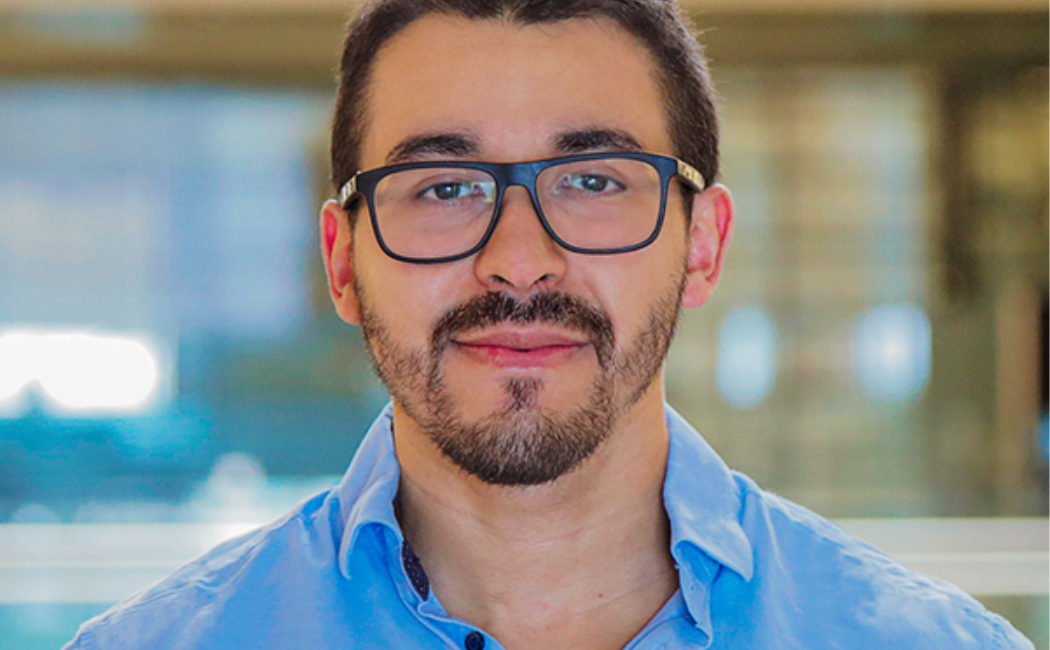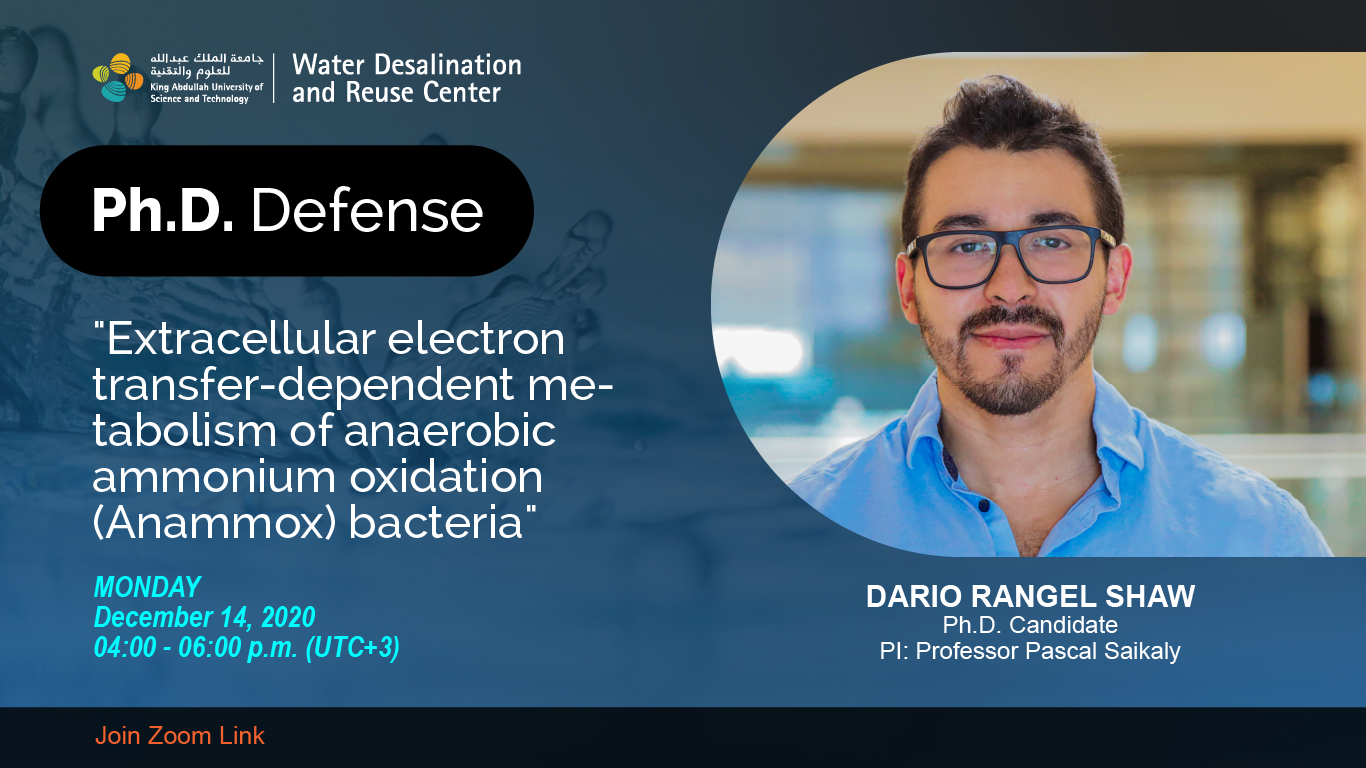



https://kaust.zoom.us/j/99912166427
Anaerobic ammonium oxidation (anammox) by anammox bacteria contributes significantly to the global nitrogen cycle and plays a major role in sustainable wastewater treatment. To date, autotrophic nitrogen removal by anammox bacteria is the most efficient and environmentally friendly process for the treatment of ammonium in wastewaters; its application can save up to 60% of the energy input, nearly 100% elimination of carbon demand and 80% decrease in excess sludge compared to conventional nitrification/denitrification process. In the anammox process, ammonium (NH4+) is directly oxidized to dinitrogen gas (N2) using intracellular electron acceptors such as nitrite (NO2–) or nitric oxide (NO). In the absence of NO2– or NO, anammox bacteria can couple formate oxidation to the reduction of metal oxides such as Fe(III) or Mn(IV). Their genomes contain homologs of Geobacter and Shewanella cytochromes involved in extracellular electron transfer (EET). However, it is still unknown whether anammox bacteria have EET capability and can couple the oxidation of NH4+ with transfer of electrons to extracellular electron acceptors. In this dissertation, I discovered by using complementary approaches that in the absence of NO2–, freshwater and marine anammox bacteria couple the oxidation of NH4+ with transfer of electrons to carbon-based insoluble extracellular electron acceptors such as graphene oxide (GO) or electrodes poised at a certain potential in microbial electrolysis cells (MECs). Metagenomics, fluorescence in-situ hybridization and electrochemical analyses coupled with MEC performance confirmed that anammox electrode biofilms were responsible for current generation through EET-dependent oxidation of NH4+. 15N-labelling experiments revealed the molecular mechanism of the EET-dependent anammox process. NH4+ was oxidized to N2 via hydroxylamine (NH2OH) as intermediate when electrode was used as the terminal electron acceptor. Comparative transcriptomics analysis supported isotope labelling experiments and revealed an alternative pathway for NH4+ oxidation coupled to EET when electrode was used as electron acceptor. The results presented in my dissertation provide the first experimental evidence that marine and freshwater anammox bacteria can couple NH4+ oxidation with EET, which is a significant breakthrough, and challenges our perception of a key player in nitrogen cycle and sustainable wastewater treatment which was previously believed to rely strictly on soluble electron acceptors for NH4+ oxidation. Also, since complete NH4+ oxidation to N2 without accumulation of NO2– and NO3– was achieved in the EET-dependent anammox, these findings are promising in the context of implementing EET-dependent anammox process for energy-efficient treatment of nitrogen using bioelectrochemical systems.
Dario is currently a Ph.D. candidate at the King Abdullah University of Science and Technology (KAUST). His research focuses on the microbial ecology of anaerobic ammonium oxidation (anammox) bacteria and electroactive bacteria. Because of his scientific contribution to discovering the extracellular electron transfer-dependent anaerobic ammonium oxidation process, Dario was awarded with the Soehngen Institute of Anaerobic Microbiology (The Netherlands) talent grant and the Discovery Award for best scientific paper in 2020 by the International Society for Microbial Electrochemistry and Technology (ISMET).